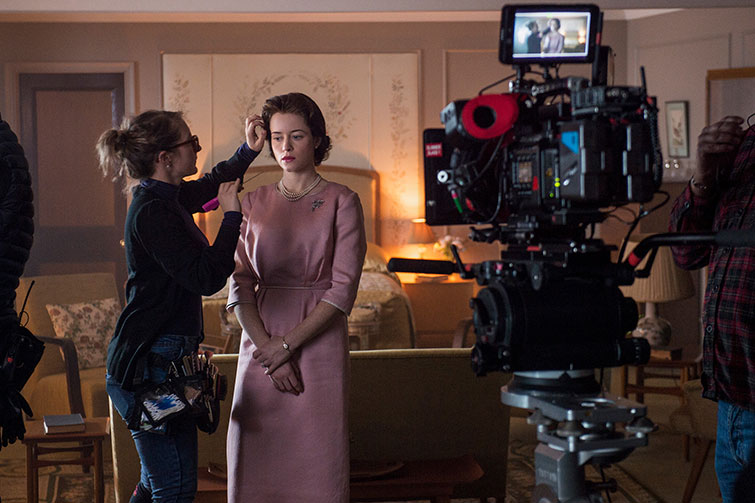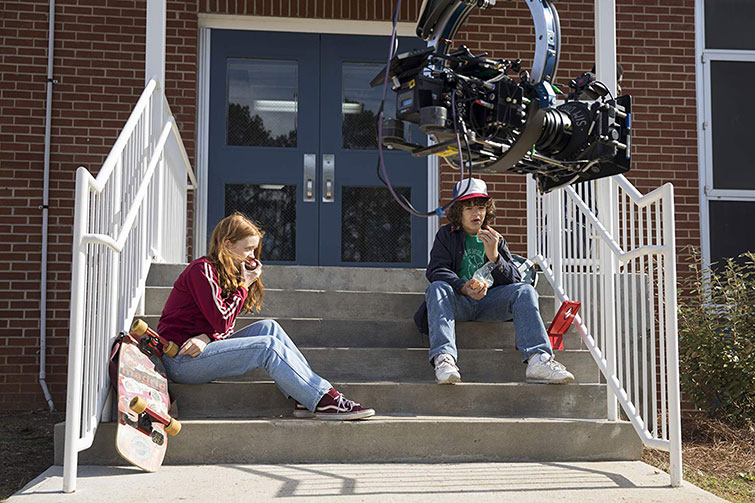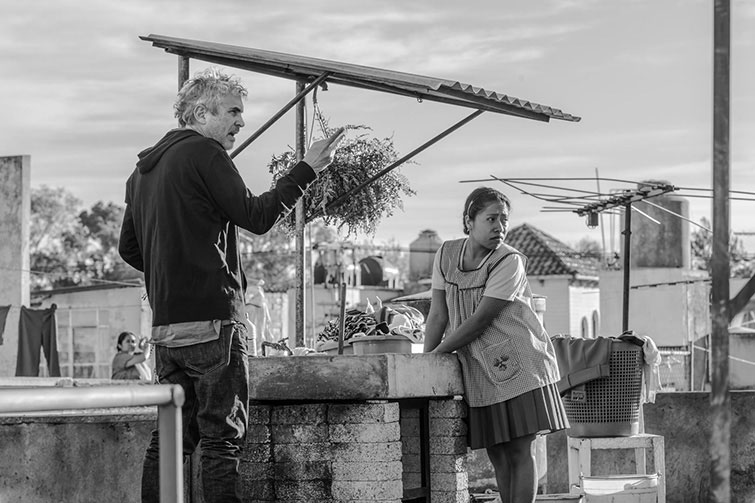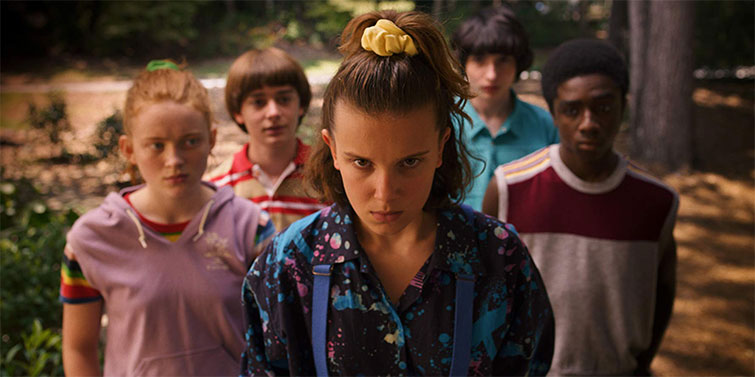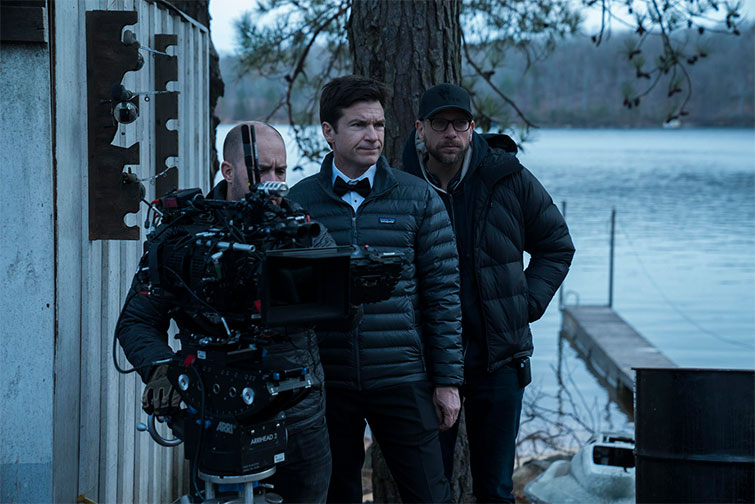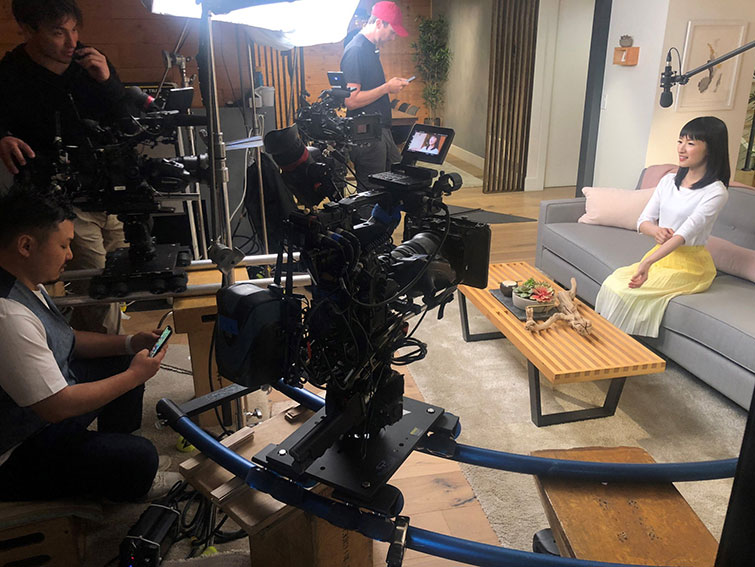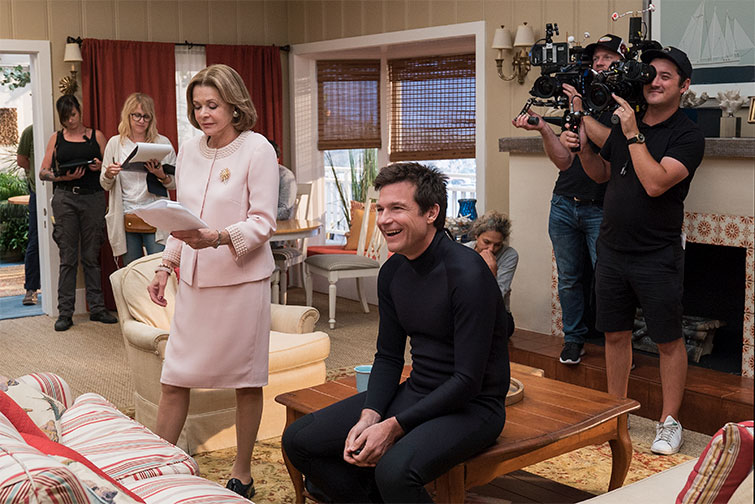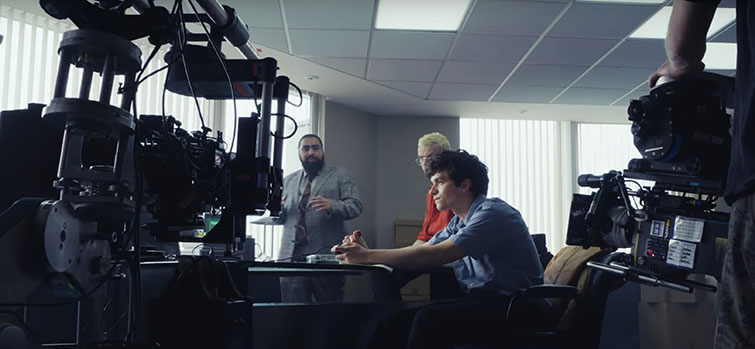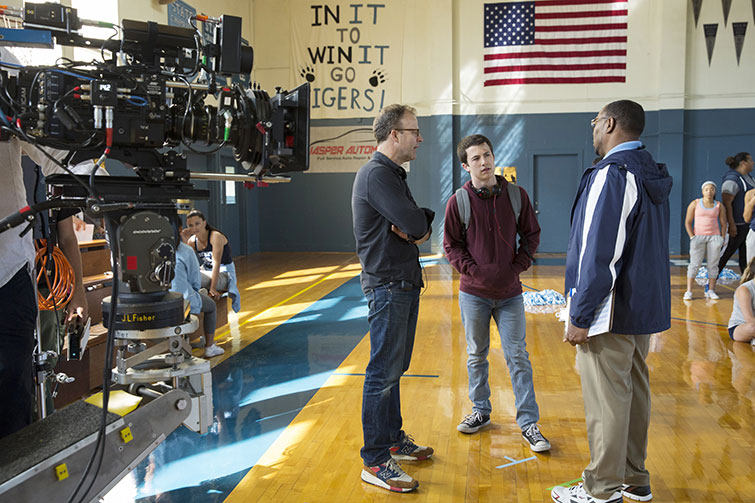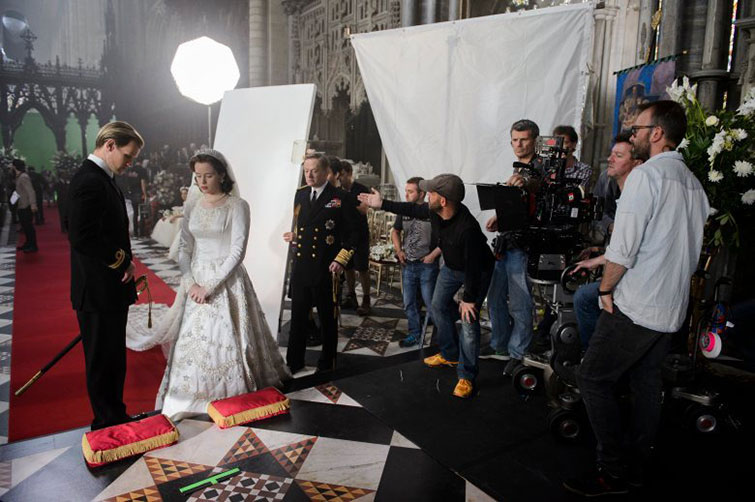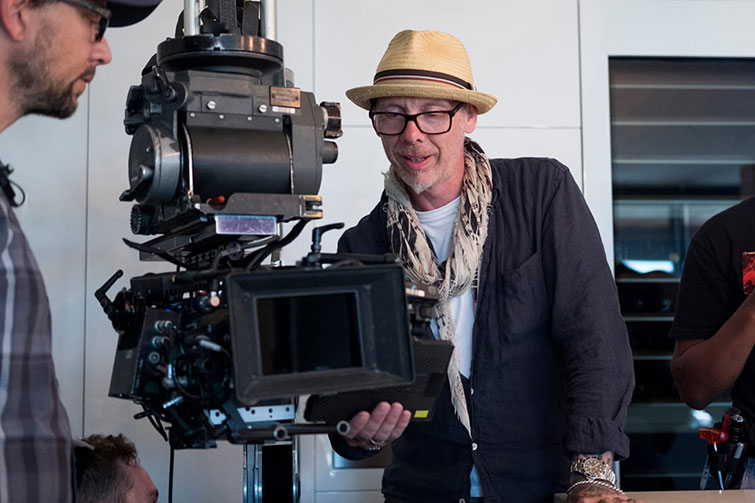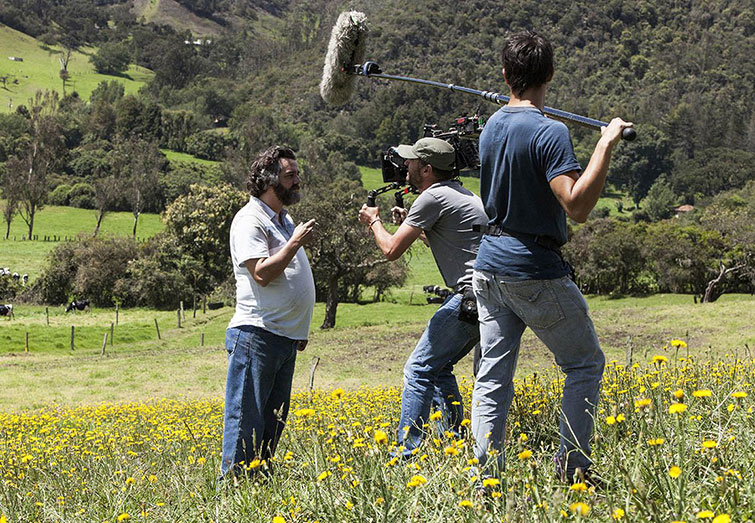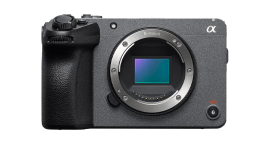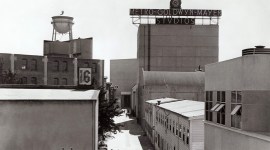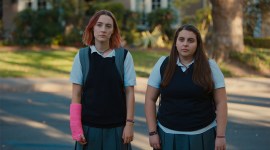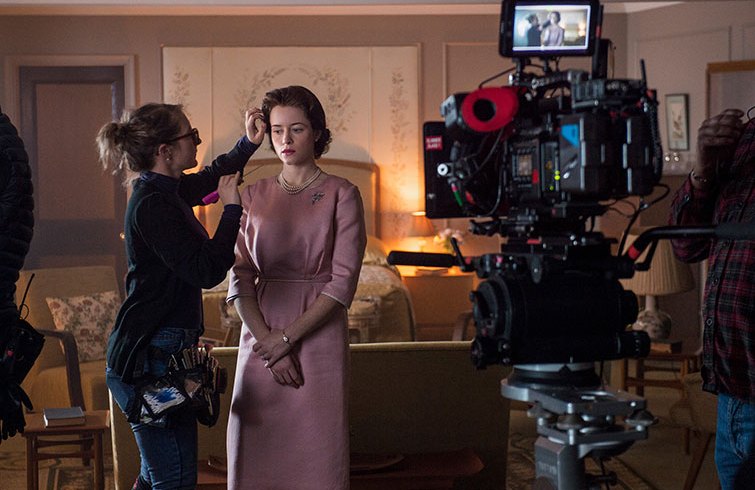
The Cameras Behind Popular Netflix Originals: Films and Series
Want to know about the cameras behind Netflix Originals? Here are the cameras Netflix has officially approved — and the films and series using them.
It’s been a while since we’ve talked about the Netflix camera standards and the shows using them. Let’s take a look at the updated requirements, as well as what the latest Netflix shows are using.
Netflix Camera Requirements
Cameras must have a true 4K UHD sensor (equal to or greater than 3840 photosites wide). The capture requirements allow for RAW (REDCODE, ARRIRAW, etc) as well as COMPRESSED (XAVC, ProRes, or other I-Frame capable formats). Netflix also requires a minimum of 16-bit Linear or 10-bit Log processing, and minimum data-rate of Bitrate of 240 Mbps at 23.98 fps.
Cameras that don’t meet these standards must be approved by Netflix, and are allowed in certain use cases like crash cams, POV, drones, and underwater.
Approved Netflix Cameras
Since our last report, Netflix added a few new cameras to its approved list, including the Panasonic AU-EVA1, Canon C700 FF, Sony broadcast cameras, and additional RED cameras. Netflix also maintained the traditional (and confusing) RED camera names that have since changed to the DSMC2 BRAIN with select sensors.
Note that this isn’t a comprehensive list, and other cameras are allowed by require approval. (Kodachrome was captured on Super 35.)
Here is the list of approved cameras.
- ARRI Alexa 65
- 6K — 6560 x 3100
- ARRIRAW
- ARRI Alexa LF
- 4.5K — 4448 x 3096
- ARRIRAW
- ProRes 422 HQ (or higher)
- Blackmagic URSA Mini 4.6K
- 4.6K — 4608 x 2592
- CinemaDNG RAW
- Blackmagic URSA Mini Pro 4.6K
- 4.6K — 4608 x 2592
- CinemaDNG RAW
- Canon C300 MK II
- 4K — 4096 x 2160
- Canon RAW
- XF-AVC (4K)
- Canon C500
- 4K — 4096 x 2160
- Canon RAW
- Canon C700
- 4.5 K — 4512 x 2376
- 4K — 4096 x 2160
- Canon RAW
- XF-AVC (4K)
- ProRes HQ (4K)
- Canon C700 FF
- RAW FF — 5952 x 3140
- RAW 2.35 — 5952 x 2532
- 4K — 4096 x 2160
- UHD — 3840 x 2160
- Canon RAW
- XF-AVC (4K)
- ProRes HQ (4K)
- Panasonic VariCam 35
- 4K — 4096 x 2160
- V-RAW
- AVC-Intra4K
- Panasonic VariCam LT
- 4K — 4096 x 2160
- V-RAW
- AVC-Intra4K
- Panasonic VariCam Pure
- 4K — 4096 x 2160
- V-RAW
- Panasonic AU-EVA1
- 4K — 4096 x 2160
- All-Intra 400
- Firmware 2.02 or higher required
- Panavision DXL2
- 8K — 8192 x 4320
- REDCODE RAW
- RED WEAPON VV 8K (Monstro, Dragon)
- 8K — 8192 x 4320
- REDCODE RAW
- RED WEAPON 8K S35 (Helium)
- 8K — 8192 x 4320
- REDCODE RAW
- RED EPIC-W 8K S35 (Helium)
- 8K — 8192 x 4320
- REDCODE RAW
- RED WEAPON 6K (Dragon)
- 6K — 6144 x 3160
- REDCODE RAW
- RED EPIC 6K (Dragon)
- 6K — 6144 x 3160
- REDCODE RAW
- RED EPIC-W 5K S35 (Gemini)
- 5K — 5120 x 2700
- REDCODE RAW
- RED SCARLET-W 5K (Dragon)
- 5K — 5120 x 2700
- REDCODE RAW
- RED RAVEN 4.5K (Dragon)
- 4.5K — 4608 x 2160
- REDCODE RAW
- Sony Venice
- 6K — 6048 x 4032
- RAW
- X-OCN
- XAVC-I
- Sony F55
- 4K — 4096 x 2160
- F55RAW
- X-OCN
- XAVC-I (4K)
- Sony F65
- 4K — 4096 x 2160
- F65RAW
- F65RAW-LITE
- XAVC (4K)
- Sony FS7 / FS7 II
- 4K — 4096 x 2160
- XAVC (4K)
- Sony HDC-4300
- 4K 4096 X 2160
- 4K Baseband Video
- Sony PXW-Z450
- UHD 3840 x 2160
- XAVC-I QFHD 300 mode
Cameras Behind the Scenes of Popular Netflix Originals
Roma
The 2019 Oscar winner of Best Director, Best Cinematography, and Best Foreign Language Film was captured digitally on the Alexa.
Roma Camera Package:
Stranger Things
Stranger Things 3 Camera Package:
- RED DSMC2 Monstro 8K
- Leica Summilux-C Lenses
- REDCODE RAW
Check out this great behind-the-scenes of season two’s cinematography.
The Ballad of Buster Scruggs
Buster Scruggs Camera Package:
- Arri Alexa Mini
- Arri Alexa XT Studio
- Zeiss Master Prime
- Fujinon Alura Lenses 15.5-45 and 30-80
- ARRIRAW 3.4K Open Gate
In an interview with IndieWire, cinematographer Bruno Delbonnel said:
“I was trying to keep things as simple as possible since it was the first time Joel and Ethan Coen were using a digital camera. I’ve never been interested in the new technologies, I always tried to keep thing very simple. Light and framing are more important than the new toys. For years I was using the same package: a set of Cooke S4 lenses, an Arricam, and Kodak 5219. For this project, the closest to this set on digital was the Alexa studio and its optical finder and a set of master primes because of the extra stop I would need on remote locations with a very limited access to big generators. The main challenge for Buster Scruggs was to find a different ‘look’ for the six short stories while keeping the visual idea of an “Illustration book.”
Ozark
Ozark Camera Package:
- Panasonic VariCam 35
- Cooke S4
- Zeiss Super Speed
- Hawk V-Lite and V-Lite Vintage ’74 Lenses
While talking to Awards Daily, DP Ben Kutchins said:
“We’re always going for the more subtle version of what anything could be. You never want to hit the audience over the head. The most cinematic, slowburn version is the most interesting version to us. We’re always looking for that thing that’s just beneath the surface that’s a little darker than what you might see at first glance. We want to make the most cinematic version, while also keeping the camera close, and therefore keeping the audience close. So that it feels like a first-person experience. To never rely on the objective viewpoint.”
In another interview with Deadline, Kutchines went on to say:
“But in terms of how we shot, it was different from TV in that we didn’t use zoom lenses; we were very precise about the focal lengths that we used. In general, the show is shot on a 27 or a 32mm lens. That’s sort of our bread and butter; that’s what we live on. The idea of being a little wider and a little closer to the actors is something that we’ve strived for. So I would say if there is a rule, it’s to get the camera as close to the actor as possible and make it an intimate first-person experience.
“We shot the show on a Panasonic VariCam, and the reason we chose that is a combination of needing to shoot on 4K, but also the camera really performs well in low light, and that’s something that we knew we were going to be doing a lot of. Really, there’s an effort on the show to use the least amount of light possible. If I’m looking at something and I’m not quite sure if it’s right, I just turn it off. That’s sort of been my go-to on this show.”
Tidying Up with Marie Kondo
Tidying Up with Marie Kondo Camera Package:
- Canon C300
- Fujinon Cabrio Cine Zooms (six 19-90mm, three 85-300mm, one 14-35mm)
In an interview with Post Perspective, DP Tom Curran shared:
“I felt it wasn’t a series we could shoot on prime lenses, but we wanted the look that primes would bring. We ended up working with Fujinon Cabrio Cine Zooms and Canon cameras, which gave us a really filmic look.”
As for getting enough light to shoot in small houses:
“For the homes and all the movement, we used about 80 Flex lights — paper-thin LED lights that are easily dimmable and quick to install and take down. Even though we had a pretty small crew, we were able to achieve a pretty consistent look.”
The Haunting of Hill House
The Haunting of Hill House Camera Package:
- ARRI ALEXA 65
- Prime 65 and Prime 65 S Lenses
Arrested Development
Arrested Development Camera Package:
- Panasonic VariCam LT (Season 5)
- Fujinon Cabrio zooms (15-35mm, 19-90mm, and 85-300mm)
- 10-bit 422 UHD (3840×2160) AVC Intra files at 23.98-fps.
- V-Log (with V-709 LUT on set)
- RED Epic (Season 4)
- Angenieux Optimo Lenses
- Panasonic AJ-HDC27 Varicam (Previous Seasons)
Cinematographer Patrick Stewart gave insight to the production.
When hired for Arrested Development, the first request Stewart approached Hurwitz with was to add a third camera. Shooting with three cameras with multiple characters can be a logistical challenge, but Stewart felt he could get through scenes more quickly, and effectively, in order to get the actors out on time. “I call the C-camera the center camera and the A and the B are screen left and screen right,” Stewart explains. “C covers the center P.O.V., while A and B cover the scene from their left and right side P.O.V., which usually starts with overs. As we continue to shoot the scene, each camera will get tighter and tighter. If there are 3 or more actors in the scene, C will get tighter on whoever is in the center. After that, C camera might cover the scene following the dialogue with ‘swinging’ singles. If no swinging singles are appropriate then the center camera can move over and help out coverage on the right or left side.”
You can read this great in-depth piece over on Indie Shooter.
Black Mirror
Black Mirror Camera Packages:
- ARRI ALEXA (Season 1)
- RED Epic (Seasons 2-3)
- ARRI ALEXA 65 (Season 4 + Bandersnatch)
- RED Dragon (USS Callister, additional episodes)
- Sony F55 (used as second/third camera)
13 Reasons Why
13 Reasons Why Camera Package:
- Panasonic VariCam 35 (Season one)
- Hawk V-Lite
- Leica Summilux-C Lenses
- Panavision Millennium DXL (Season two)
- Red Helium 8K (Season two)
In an interview with Pro Video Coalition, cinematographer Andrij Parekh said:
“Understanding that we had to shoot 4K, I tested the Alexa 65, the Sony F55, and the Varicam. The Alexa 65 was glorious — but the camera was just too big for the style of the show (a lot of handheld and moving fast). I preferred the skin tones of the Varicam to the F55, and then I discovered the dual ISO feature of the Varicam — 800 and 5000 ISO. I tested both ISOs and the 5000 was incredibly ‘clean,’ with very little video artifacts or digital noise.”
The Crown
The Crown Camera Package:
- Sony F55
- Vintage Cooke Speed Panchros
- Tiffen Glimmer Glass
While sharing behind-the-scenes information with the ASC Magazine, Adriano Goldman said:
“When I joined, I was told that Netflix demands a 4K workflow from beginning to end, so I tested the Sony F55, the Sony F65, and the Red Dragon…the F55 was the smallest and easiest camera to work with, so it felt like the best way to go.”
Lost in Space
Lost in Space Camera Package:
- RED Weapon 8K
- Leica Summilux-C Primes
In an interview with British Cinematographer, DP Sam McCurdy shares:
“I’ve been a believer in Red for some years and applaud the way they try to develop new technologies to suit new ways of filming…We tested the Helium extensively and it was quickly apparent that there was nothing else out there like this in terms of its modern look.”
He went on to say:
“Although we deployed two Weapons, we shot the show as a single-camera drama. We used very little handheld or Steadicam and instead went back to basics. We didn’t want the new gimmicks like fancy 360-degree shoots. I felt we needed to be intimate with the family and their drama, and we were there to photograph that.”
Narcos: Mexico
Narcos: Mexico Camera Package:
- Red DSMC2 Dragon
- Hawk V‑Lites (28, 35, 45, 55, 65, 80, 110, and 140mm lenses)
- Hawk Vintage ’74 anamorphic lenses
- DJI Inspire 1 (drone shots)
While talking with Vantage Film, cinematographer Luis Sansans shared:
“For season 4, we changed the look dramatically. After consulting with the producers, we decided to switch to anamorphic lenses and a 2:1 aspect ratio, which is between the 16:9 frame used previously and the full 2.40:1 of standard anamorphic.”
Chilling Adventures of Sabrina
Chilling Adventures of Sabrina Camera Package:
- RED Helium 8K
- Panavision G Series – Ultragold Series Anamorphic
GLOW
GLOW Camera Package:
- RED Dragon (Season 1)
- RED Weapon 8K S35 (Season 2)
- Cooke Anamorphic /i Prime Lenses
In a conversation with Indie Wire, cinematographer Christian Sprenger shares:
“The look of GLOW is meant to transport the audience to a grounded realistic setting of 1980s Los Angeles and then at specific times, to the elevated fantasy world of professional wrestling. Along with a custom film LUT from LightIron LA, the slightly imprecise quality of Cooke anamorphic lenses paired with the resolution of the Red felt like the perfect way to reference the audience’s nostalgia for ’80s cinema. Because we’re using modern technology, shooting at a t2.3 on the lenses and very higher ISOs on the camera, I was able to light very naturally and atmospherically instead of traditional ‘TV lighting.’ My goal was for the base of the show to feel very understated and mature so that when we did chose to heighten the aesthetic, there would be strong a stylistic contrast. That became a very powerful storytelling device throughout the season while still grounding the overall narrative and performances.”
All images via Netflix.
For more gear posts like this, check out these articles:


